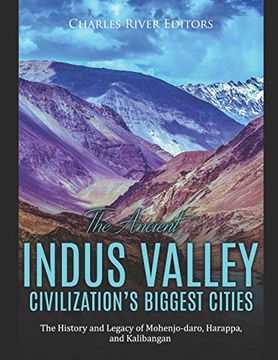The Ancient Indus Valley Civilization’S Biggest Cities: The History and Legacy of Mohenjo-Daro, Harappa, and Kalibangan (en Inglés)
Reseña del libro "The Ancient Indus Valley Civilization’S Biggest Cities: The History and Legacy of Mohenjo-Daro, Harappa, and Kalibangan (en Inglés)"
*Includes pictures*Includes excerpts of ancient accounts*Includes a bibliography for further readingWhen one thinks of the world's first cities, Sumer, Memphis, and Babylon are some of the first to come to mind, but if the focus then shifts to India, then Harappa and Mohenjo-daro will likely come up. These cities owe their existence to India's oldest civilization, known as the Indus Valley Civilization or the Harappan Civilization, which was contemporary with ancient Mesopotamia and ancient Egypt and had extensive contacts with the former, making it one of the most important early civilizations in the world. Spread out along the rivers of the Indus River Valley, hundreds of settlements began forming around 3300 BCE, eventually coalescing into a society that had all of the hallmarks of a true civilization, including writing, well-developed cities, a complex social structure, and long-distance trade. Mohenjo-daro was the largest city of the Indus Valley Civilization, one of the most advanced civilizations to have ever existed, and the best-known and most ancient prehistoric urban site on the Indian subcontinent. It was a metropolis of great cultural, economic, and political importance that dates from the beginning of the 3rd millennium BCE. Although it primarily flourished between approximately 2500 and 1500 BCE, the city had longer lasting influences on the urbanization of the Indian subcontinent for centuries after its abandonment. It is believed to have been one of two capital cities of the Indus Civilization, its twin being Harappa located further north in Punjab, Pakistan.The fact that the ancient Indus Valley Civilization is also often referred to as the Harappan Civilization demonstrates how important the discovery of Harappa is. As archaeologists and historians began to uncover more of the ancient Harappa site in the 19th and early 20th centuries, a more complete picture of the city emerged, namely its importance. Research has shown that Harappa was one of the three most important Indus Valley cities, if not the most important, with several mounds of settlements uncovered that indicate building activities took place there for over 1,000 years. At its height, Harappa was a booming city of up to 50,000 people who were divided into neighborhoods by walls and who went about their daily lives in well-built, orderly streets. Harappa also had drainage systems, markets, public baths, and other large structures that may have been used for public ceremonies. Ancient Harappa was truly a thriving and vibrant city that was on par with contemporary cities in Mesopotamia such as Ur and Memphis in Egypt. Among the many cities that formed in the region was a site known today as Kalibangan, which was unknown to the modern world until archaeologists began uncovering its secrets in excavations during the 1960s. They uncovered a city that was not as large or important as the better-known sites of Mohenjo-daro and Harappa, but one that was still relatively large and the most important of all Indus cities along the now extinct Saraswati River. Excavations at Kalibangan have revealed that the city had two phases of settlement which corresponded with the two major phases of Indus Valley Civilization, and that it influenced the smaller settlements along the Saraswati River. Archaeological work at Kalibangan has also shown that although it followed some of the patterns of larger Indus cities such as Mohenjo-daro and Harappa, it was also a unique city in many ways. Kalibangan was located on a different river from the other major Indus Valley Civilization cities, and its river suffered a fate that led to the end of the city. The city of Kalibangan also presented modern archaeologists with a treasure trove of findings because it was one of the best preserved Harappan sites, giving scholars a chance to see not only how the people of Kalibangan lived, but possibly how the city died.

